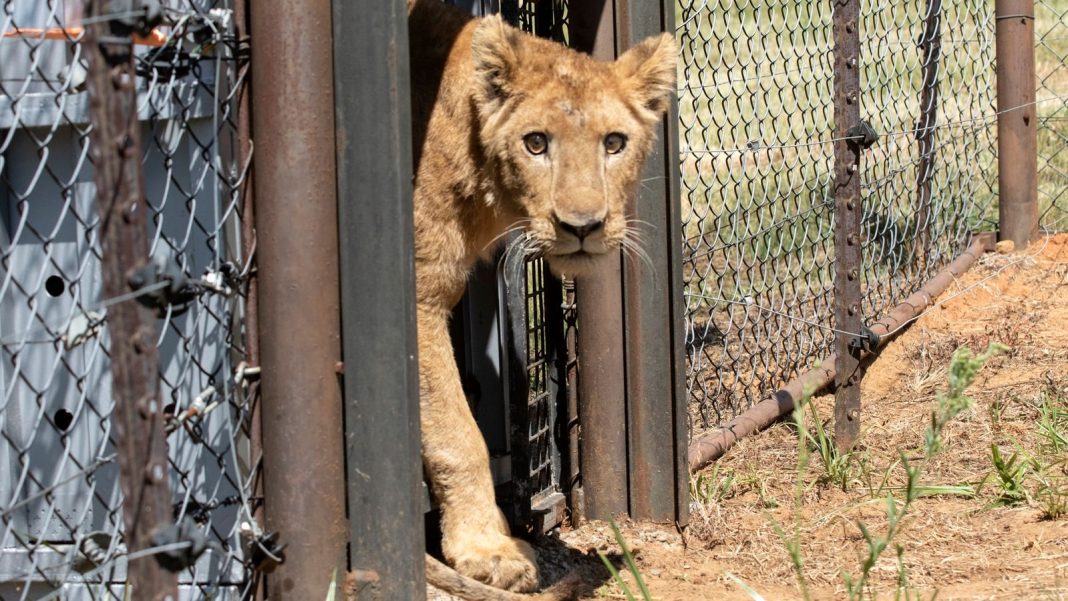Lying on the hard desert ground, a lion is reduced to a pile of fur and bones – drained of all the strength and power we associate with the ferocious predator. So emaciated, he is barely even recognisable.
He gently squirms as a towel is placed over his eyes by a rescue worker. There is no bite or fight left in him.
Captive animals are rarely spared from the horrors of conflict – even victimising the beasts we traditionally fear and respect.
Warning: This article includes images of animals some may find distressing.
Staff at Sudan’s first and only animal shelter fled for safety when war broke out in Sudan in April 2023 and the Rapid Support Forces (RSF) militia began their rampage of the capital Khartoum while battling the Sudanese Armed Forces (SAF) for territorial control.
In the absence of carers and at the mercy of militiamen, the lions and other shelter animals languished from starvation.
The SAR has tried to rescue a number of captive animals from war-torn Sudan
The Sudan Animal Rescue (SAR) team spent months fundraising for the animals’ continued care and pleading for external intervention.
The animals had endured almost eight months of confined suffering when animal welfare organisation Four Paws heeded the call and stepped in to evacuate them.
Read more:
Scale of Sudan destruction revealed by satellite images
Orphaned and disabled children flee fighting in Sudan
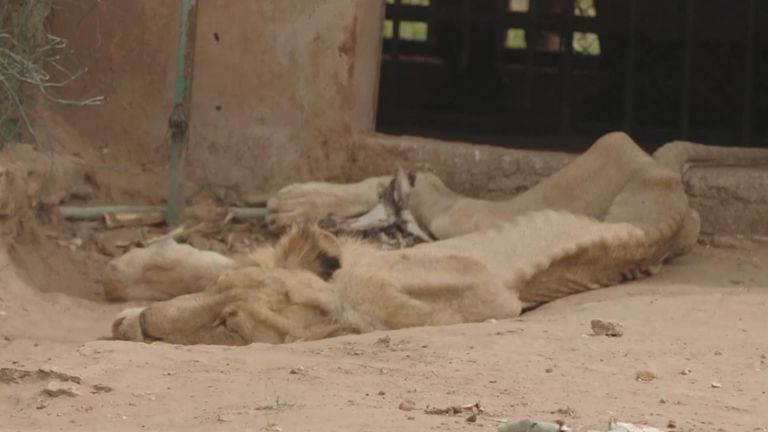
The emaciated lion starved as its carers were forced to flee the war
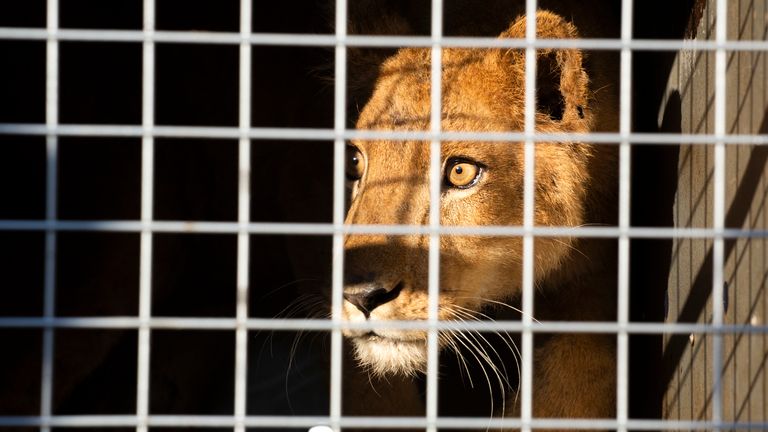
A lion being rescued rehomed after evacuation from Sudan Pic: Four Paws/Hristo Vladev
Veterinarian and head of mission Dr Amir Khalil was shocked by what he found.
“It is a very bad situation. The animals are really in very, very bad condition – [it is a] very critical situation,” Dr Khalil said from the Khartoum rescue shelter in November.
The lions were dying at a rapid rate.
“We were just informed yesterday that another lion passed away,” he added.
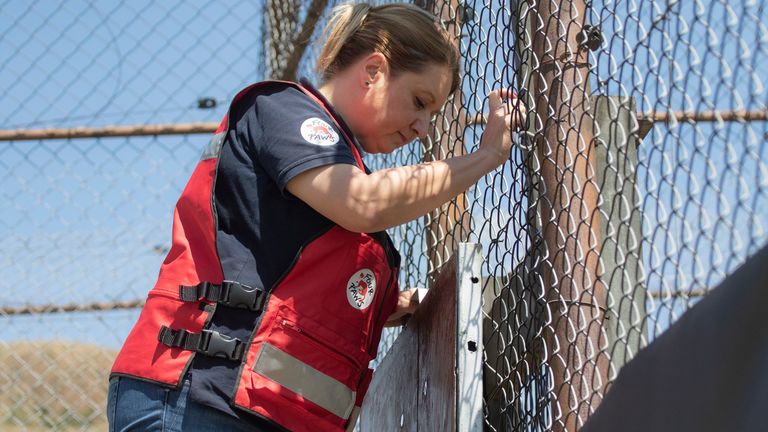
The staff returned to Sudan to evacuate the animals in January. Pic: Four Paws/Hristo Vladev
Under his supervision, 48 shelter animals were transferred nearly four hours by road to Wad Madani – a haven and sister city of Sudan’s capital Khartoum – in preparation to leave the country.
Only 15 out of the 23 lions originally in the shelter were evacuated. It is unclear what happened to the eight other lions. Other than starvation and illness, reports indicate that some were killed and taken by the RSF.
Only a month later in December, the RSF advanced on Wad Madani. Their campaign of violence pushed hundreds of thousands of people to flee within the first few days – many displaced for a second time.
As safe spaces dwindled, Four Paws returned to Sudan in early January to complete the evacuation of the 15 lions and other wild cats in dire need of special veterinary care.

Staff preparing to release the lion. Pic: Four Paws/Hristo Vladev
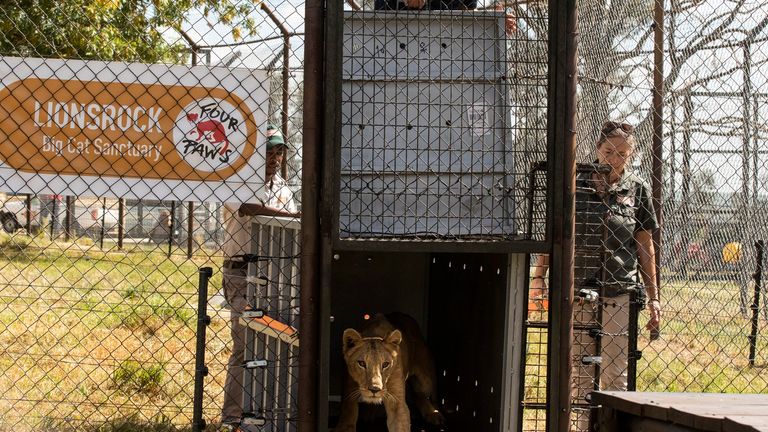
The animals have been given a new home in South Africa. Pic: Four Paws/Hristo Vladev
It took a week and a half to transfer them to Port Sudan – the wartime capital and location of the only remaining international airport – and out to Jordan.
Three adult lions were permanently settled in Jordan’s Al Ma’wa for Nature and Wildlife.
But the joy and relief of a successful evacuation was marred by loss.
One lion, Karim, died from weakness after surviving nine months of war and an exhausting double evacuation.
“Karim was a brave lion who fought – especially in the last two months from Khartoum to [Wad] Madani to Dinder National Park and Port Sudan – till this place where we are now,” says Dr Khalil over Karim’s crate in Jordan.
“It was a huge trip.”
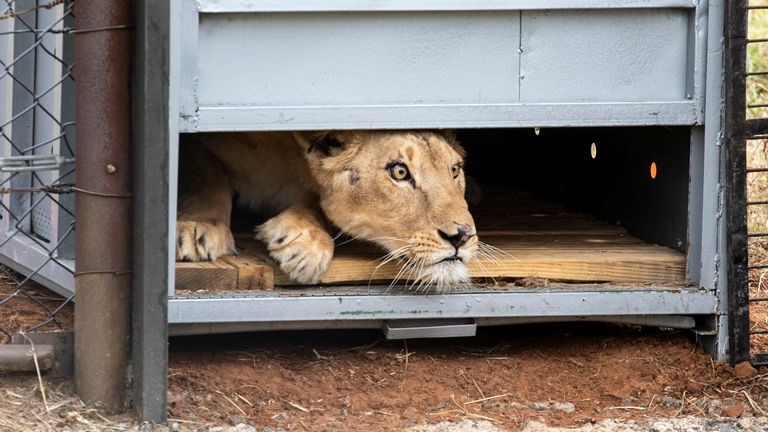
A lion tentatively makes its way out of the cage. Pic: Four Paws/Hristo Vladev
Eleven young lions travelled onwards to the Lions Rock Sanctuary in South Africa’s Free State.
At only 10 months, the youngest is as old as Sudan’s war.
When we saw them in their final home at the sanctuary, they had undergone close to a week of intensive care. The symptoms of illness and malnutrition are now far more subtle but no doubt there.

The lions were given intensive care at the sanctuary. Pic: Four Paws/Hristo Vladev
As we approached the fencing, sanctuary manager Hildegard Pirker told us to move slowly and stay low. One small step towards the enclosure and a young lion gave a startled jump reminiscent of post-traumatic stress seen in humans. A sign of hidden scars too.
“They had to go through a lot of trauma and physical hardship. They are extremely resilient, thinking what they went through even as cubs already… they are survivors,” says Hildegard.


